We’ve already entered a new month and April ’17 looks like it has some very exciting things waiting for us – some new beginnings that might bring a sparkle to our eyes in best old-school shoujo manga fashion and some endings that will hopefully not be too tear-inducing…
 → The second week of April marks the start of an anime TV series based on Fukuyama RyÅko’s Fukumenkei Noise (Anonymous Noise). The series has been destined for the whole multi-platform treatment it will be getting (there’s also a movie coming out in November this year) from the start. Yes, it’s literally screaming for a form that goes beyond the printed medium and brings sound into the whole affair because it is about just that – sound, music! From April 11 on, which is the day the first episode airs in Japan, we can expect some pop punk noise accompanying the story of the love triangle between the girl Nino who turns into Alice, the lead singer of the massively hyped newcomer band in No hurry to shout (called Inohari by fans and the media), whose members wear bandages and eye-patches to hide their identities. Their guitarist and main songwriter Yuzu brings Nino into the band after Nino had inspired him to write songs for her back when they were kids and Nino had to overcome the fact that her first love Momo had suddenly moved away. Yuzu himself is still in love with Nino while Nino tries to find Momo through her voice but when she finally does, he rejects her. Momo is now a famous composer of pop songs, feeling guilty about making money with the songs he originally wrote for Nino for whom he still has feelings. He’s just in senior high, the same one Nino and Yuzu attend. And what makes the situtation even more complicated, he’s the bassist in band called SILENT BLACK KITTY who’s being criticized for being nothing but a copy band of Inohari.
→ The second week of April marks the start of an anime TV series based on Fukuyama RyÅko’s Fukumenkei Noise (Anonymous Noise). The series has been destined for the whole multi-platform treatment it will be getting (there’s also a movie coming out in November this year) from the start. Yes, it’s literally screaming for a form that goes beyond the printed medium and brings sound into the whole affair because it is about just that – sound, music! From April 11 on, which is the day the first episode airs in Japan, we can expect some pop punk noise accompanying the story of the love triangle between the girl Nino who turns into Alice, the lead singer of the massively hyped newcomer band in No hurry to shout (called Inohari by fans and the media), whose members wear bandages and eye-patches to hide their identities. Their guitarist and main songwriter Yuzu brings Nino into the band after Nino had inspired him to write songs for her back when they were kids and Nino had to overcome the fact that her first love Momo had suddenly moved away. Yuzu himself is still in love with Nino while Nino tries to find Momo through her voice but when she finally does, he rejects her. Momo is now a famous composer of pop songs, feeling guilty about making money with the songs he originally wrote for Nino for whom he still has feelings. He’s just in senior high, the same one Nino and Yuzu attend. And what makes the situtation even more complicated, he’s the bassist in band called SILENT BLACK KITTY who’s being criticized for being nothing but a copy band of Inohari.
Fukumenkei Noise follows Nino and the two very different boys, Yuzu and Momo, and their bands all the way to the top of the pop music world. With the added element of ‘real’ music, the anime will hopefully express even more powerfully the youthful energy and passion of the manga, currently running in Hana to Yume. I can’t wait. And please note: a post for the manga is coming to this very space next week!
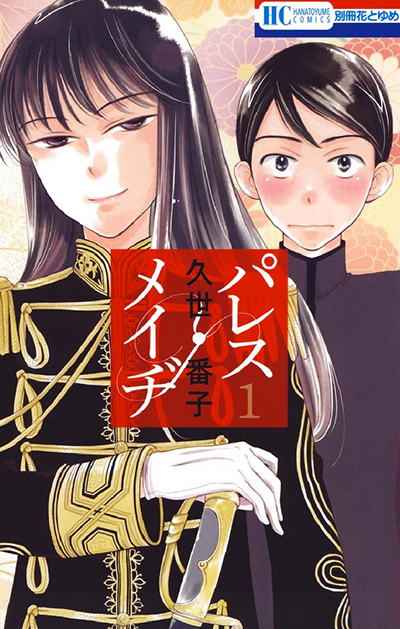 → The end of the month will bring readers the final chapter of Kuze Banko’s series Palace Meiji in Hakusensha’s Betsuhana (Bessatsu Hana to Yume), with its June issue in stores April 26. To commemorate the conclusion of the magazine’s number one title, Palace Meji will be getting the magazine’s cover, a color spread and a furoku fan book called “Palace no omoide” (literally “Memories of the Palace”) along with the last chapter. And I’m getting my tissues ready because I really enjoyed young hero Kimiyori’s years of training and working at Meiji Palace, serving the young, tough and beautiful (fictional) empress Akiko. 6 comic volumes filled with episodes of court life in alternative modern-meets-traditional Japan, subversions of gender roles and lots of action, human drama, warm humour and suspense have been published so far, already destined to become classic shÅjo manga material.
→ The end of the month will bring readers the final chapter of Kuze Banko’s series Palace Meiji in Hakusensha’s Betsuhana (Bessatsu Hana to Yume), with its June issue in stores April 26. To commemorate the conclusion of the magazine’s number one title, Palace Meji will be getting the magazine’s cover, a color spread and a furoku fan book called “Palace no omoide” (literally “Memories of the Palace”) along with the last chapter. And I’m getting my tissues ready because I really enjoyed young hero Kimiyori’s years of training and working at Meiji Palace, serving the young, tough and beautiful (fictional) empress Akiko. 6 comic volumes filled with episodes of court life in alternative modern-meets-traditional Japan, subversions of gender roles and lots of action, human drama, warm humour and suspense have been published so far, already destined to become classic shÅjo manga material.
In related news, another long-running series, the romantic comedy Pochama ni by Hirama Kaname will come to an end in that same issue of Betsuhana.
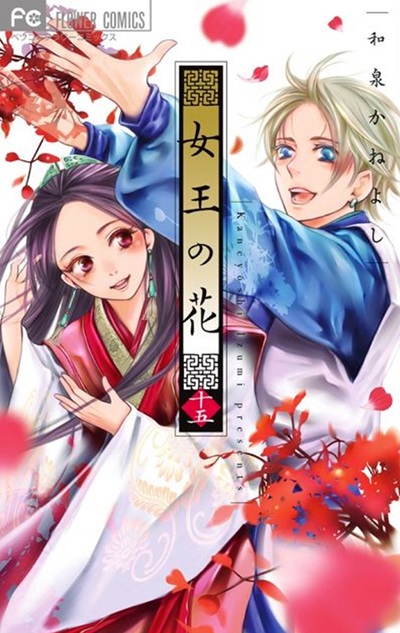 → Following up from this post and the publication of the final volume of Izumi Kaneyoshi’s JoÅ no hana, it’s only fair to say the fantasy romance series stuck out like a rainbow-colored swallowtail butterfly among the brownish grey moths usually running in Shogakukan’s Betsucomi. The publisher itself must have come to the same realization and transferred the artist to the place she rightfully belongs on its roster of shÅjo magazines, that being Monthly flowers. Izumi’s new series of one-shots will start with its first story titled SuisÅ Yakyoku (let me see, Nocturne of the Water Tank?), a whopping 60 pages including color pages plus the cover of the magazine, published in Gekkan flowers 6/2017 out on April 28. Looks like we’re back in the present day with a ‘it’s slightly complicated’ type of romantic comedy, judging from the short bit of description and the illustration of the two main characters on the flowers preview page.
→ Following up from this post and the publication of the final volume of Izumi Kaneyoshi’s JoÅ no hana, it’s only fair to say the fantasy romance series stuck out like a rainbow-colored swallowtail butterfly among the brownish grey moths usually running in Shogakukan’s Betsucomi. The publisher itself must have come to the same realization and transferred the artist to the place she rightfully belongs on its roster of shÅjo magazines, that being Monthly flowers. Izumi’s new series of one-shots will start with its first story titled SuisÅ Yakyoku (let me see, Nocturne of the Water Tank?), a whopping 60 pages including color pages plus the cover of the magazine, published in Gekkan flowers 6/2017 out on April 28. Looks like we’re back in the present day with a ‘it’s slightly complicated’ type of romantic comedy, judging from the short bit of description and the illustration of the two main characters on the flowers preview page.
The current flowers issue (5/2017) celebrates the 20th anniversary of Watanabe Taeko’s Kaze hikaru along with a sticker calender furoku, the beginning of the final story arc of Tamura Yumi’s long-running post-apocalyptic action manga 7SEEDS (which I must admit has the ability to give me nightmares, that series is just not for the faint of heart), and the very last chapter of Kodama Yuki’s Tsukikage Baby, the follow-up to her hit series Sakamichi no Apollon (Kids on the Slope).
My order with the limited edition of the final volume of JoÅ no hana with the memorial fan book isn’t here yet but I noticed it’s already sold out at most places and going for slightly crazy prices at amazon… See the cover for it, which wasn’t out when I wrote my post last month, on the top right!
So this looks like a fun-packed month that is guaranteed to bring lots of material to shorten rainy spring days and long commutes to and from school/work!

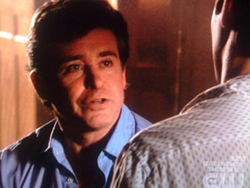
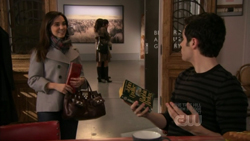
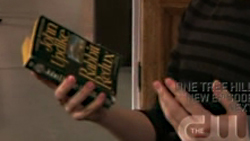


 Speaking of my favourite portrayer of the Sheep Man:
Speaking of my favourite portrayer of the Sheep Man: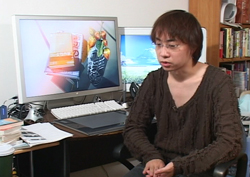
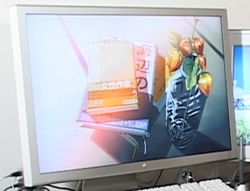
 During my research on Murakami Ryu I realized that Murakami’s been observing both mass culture & subculture phenomena from an almost outsider’s point of view while at the same time he himself is part of this mass media monster, this huge machinery (with both positive and negative qualities) in which everyone seems to be influenced by everyone in their output and instantly influences others the second they publish their ‘product’/output. As controversial as his thoughts and works might be, Murakami has already influenced a flock of younger writers, some of which have paid homage to his works through tiny details in their own works. As an example for that, here are a few connections between Murakami and anime:
During my research on Murakami Ryu I realized that Murakami’s been observing both mass culture & subculture phenomena from an almost outsider’s point of view while at the same time he himself is part of this mass media monster, this huge machinery (with both positive and negative qualities) in which everyone seems to be influenced by everyone in their output and instantly influences others the second they publish their ‘product’/output. As controversial as his thoughts and works might be, Murakami has already influenced a flock of younger writers, some of which have paid homage to his works through tiny details in their own works. As an example for that, here are a few connections between Murakami and anime: And then there’s Eureka seveN (2005), the current generation’s Evangelion, which I admittedly quite enjoyed, though not nearly as much as Eva. It was written by the highly celebrated screenwriter Satou Dai, who also wrote (episodes of) other brilliant anime series such as Cowboy Bebop, Wolf’s Rain, Ergo Proxy and Terra e…, to name just a few. He apparently made a cross-reference to Anemone, the female protagonist in Murakami’s Coin Locker Babies (1980) by naming the pink-haired Anemone, the oh-so-tormented pilot of the Nirvash LFO TheEND, after her. In the book, Anemone has an alligator called Gulliver and in the anime, Anemone’s pet is this weird mixture of a duck, a sheep and something indefinable that is called Gulliver, too.
And then there’s Eureka seveN (2005), the current generation’s Evangelion, which I admittedly quite enjoyed, though not nearly as much as Eva. It was written by the highly celebrated screenwriter Satou Dai, who also wrote (episodes of) other brilliant anime series such as Cowboy Bebop, Wolf’s Rain, Ergo Proxy and Terra e…, to name just a few. He apparently made a cross-reference to Anemone, the female protagonist in Murakami’s Coin Locker Babies (1980) by naming the pink-haired Anemone, the oh-so-tormented pilot of the Nirvash LFO TheEND, after her. In the book, Anemone has an alligator called Gulliver and in the anime, Anemone’s pet is this weird mixture of a duck, a sheep and something indefinable that is called Gulliver, too.